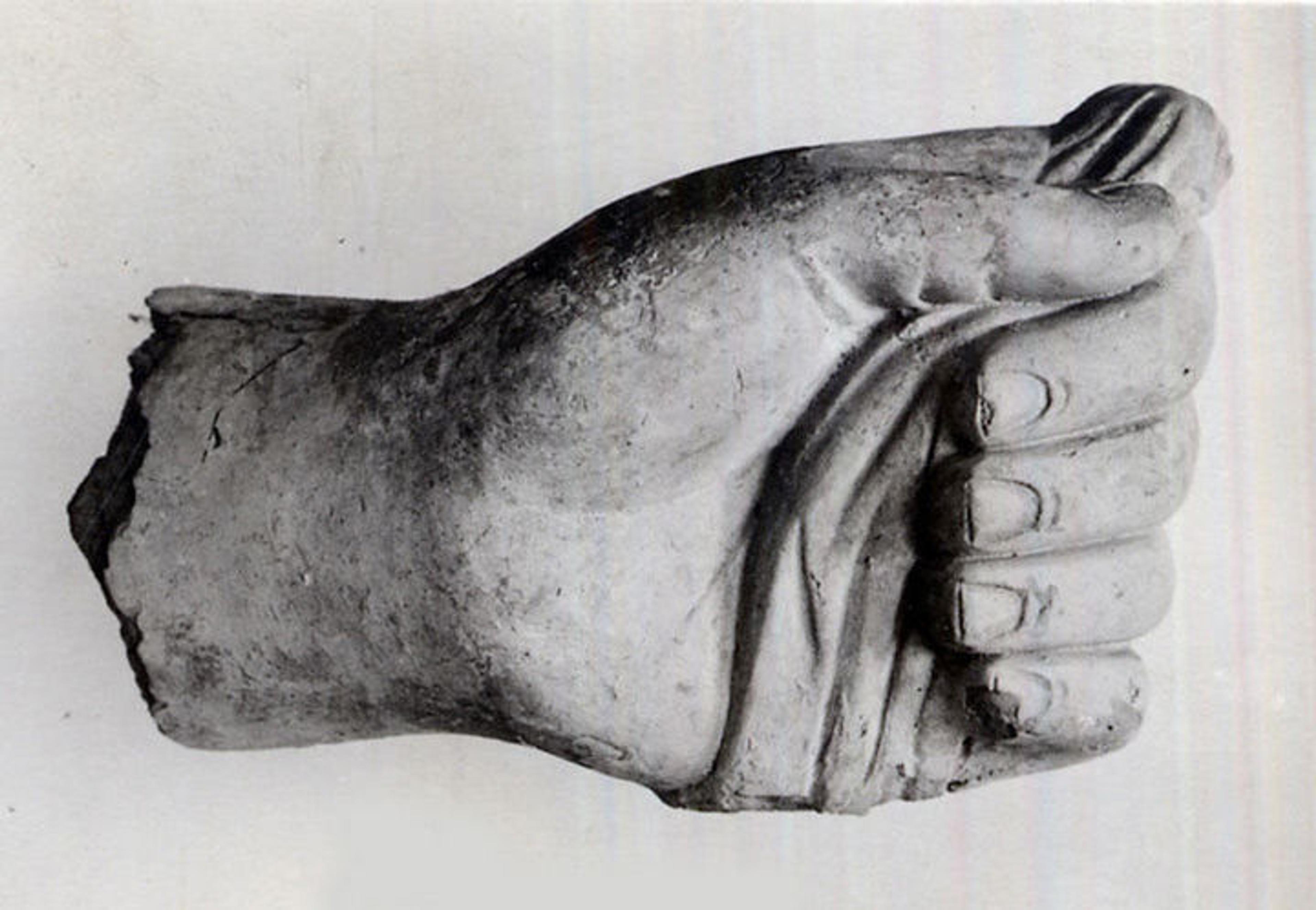
Hand, 3rd–7th century. Central Asia. Red clay; 8 x 4 1/2 in. (20.3 x 11.4 cm). The Metropolitan Museum of Art, New York, Rogers Fund, 1930 (30.32.20)
«As a child, I frequently visited The Met to observe all the different aspects of art. That's right—observe, or look only with my eyes. This may seem silly, but to a young child observing is like the next Mission Impossible. Don't get me wrong; I loved coming to the Museum (I still do!), but I just thought it was so unfair that I couldn't feel the beauty of the art with my fingers. I was always taught that "sharing is caring," and to me, neither the artist nor the Museum staff were being caring enough to let me put my finger on anything. Was the artist just being greedy by not wanting anyone to touch what they made? As I grew up, and especially while interning at The Met this summer, I came to understand the true purpose of this rule.»
I now see that at a place like The Met, with all its valuable treasures, this rule is not meant to deter people from the art, but rather to preserve its longevity so more people are able to observe and have meaningful experiences with it. Through the "no touching" rule, I learned that art does not need to be touched in order for it to be felt. Art triggers emotions that form a connection between the artwork and viewer. This intangible connection is formed (most often) without touch.
During my time as an intern, I specifically remember visiting the Studiolo from the Ducal Palace in Gubbio. Made in 1478, the room's incredible patterns and textures looked so delicate. It seemed almost disrespectful to touch something as exquisite as that. The piece showed me the importance of the no touching rule and why it should always be implemented in places that hold treasures, like The Met.

Studiolo from the Ducal Palace in Gubbio, ca. 1478–82. Designed by Francesco di Giorgio Martini (Italian, 1439–1501). Italian, Gubbio. Walnut, beech, rosewood, oak and fruitwoods in walnut base; H. 15 ft. 10 15/16 in. (485 cm), W. 16 ft. 11 15/16 in. (518 cm), D. 12 ft. 7 3/16 in. (384 cm). The Metropolitan Museum of Art, New York, Rogers Fund, 1939 (39.153)
The range and depth of emotions that arise when a viewer connects with a work of art justifies not being able to touch it. The rule of no touching allows the art to speak to the public in intimate, individualized ways and preserves this window of experience for generations to come.